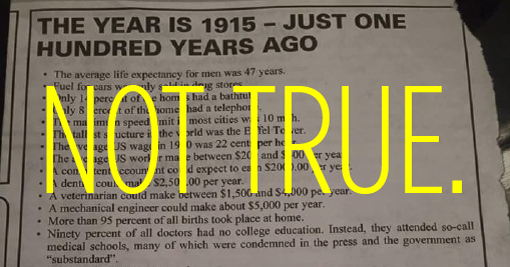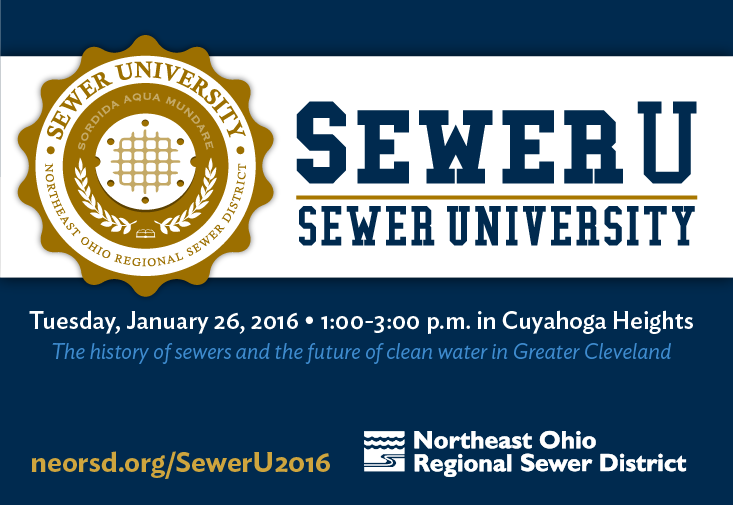
HISTORY: This viral list of 1915 facts is full of lies. Except the ones about water.
Posted by Jared Shepherd
- 5377 Views
- December 31st, 2015
- in Miscellaneous
- No Comments
Turns out this viral list of 1915 “facts” rounding out 2015 is actually a fake, filled with untruths and misleading statements. But FWIW, it turns out the few about water are indeed true.
Gizmodo’s Factually posted a breakdown of the list, a graphic that has made its internet rounds back in 2002 and 2006 with very few changes beyond a Photoshopped date. Based on the 1915 fact-checking, the water statements as shown below turn out to be true.
Only 14 percent of homes had a bathtub.
If this is referring to tubs with running water, that’s probably true. The Cleveland Division of Water has been around in some form since the 1850s but even in 1915 its service was only beginning to reach beyond the city of Cleveland. In terms of sewers, a primary pipe taking sewage away from the city was not constructed until 1905 (and until a treatment plant was constructed in 1933, that sewage simply dumped out into Lake Erie).
A mechanical engineer could make about $5,000 per year.
Engineering is a huge part of water infrastructure generally, and that’s true in our case. For comparisons today, a civil engineer starting annual salary averages $62,000.
Women only washed their hair once a month.
But we assume all of us are washing our hair more frequently in 2016, since on average Americans use 80-100 gallons of water per day.
Diarrhea was one of the six leading causes of death.
Sanitation improvements in the first half of the 1900s made tremendous strides in public health. Around the world, sanitation remains a huge concern: Diarrhea is still accountable for 20% of the six leading causes of child deaths worldwide.
Canned beer hadn’t been invested yet.
True, it was not invented until 1935. And when we talk beer, we always say drink responsibly and flush responsibly.


